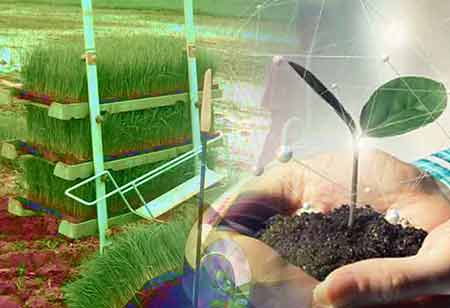Thank you for Subscribing to Agri Business Review Weekly Brief
Importance Of Multiple Cropping
A way to raise more food on the same piece of land is for farmers to practice multiple cropping,

By
Agri Business Review | Wednesday, August 17, 2022
Stay ahead of the industry with exclusive feature stories on the top companies, expert insights and the latest news delivered straight to your inbox. Subscribe today.
Better global accounting of multiple cropping systems can help scientists understand how the suggested intensification of current cropland for growing crop production can be sustainable.
FREMONT, CA: Global population and food demand are anticipated to increase substantially. Solutions to feeding and nourishing the world’s rising population include:
• Increasing access to food.
• Reducing food waste.
• Producing more food while reducing the negative influences of food production on the environment.
A way to raise more food on the same piece of land is for farmers to practice multiple cropping, identified as growing multiple crops sequentially within a year. Multiple cropping can raise production and income and has additional benefits—increased crop diversity, improved functioning of agricultural systems, spare land for biodiversity or other uses and reduced use of inorganic fertilizer and pesticides. Still, it can also have disadvantages, such as the increased risk of crop failure and risk of environmental degradation.
This approach is not new. Many farmers already practice multiple cropping, especially in tropical and subtropical regions. Still, many more farmers could intensify and diversify their farming practices by employing multiple cropping to boost agricultural production. Until now, scientists have not understood where various types of multiple cropping are practiced or quantified the land area of multiple cropping systems.
Therefore, they have not been able to properly account for it when modeling global food production, land use change and effects of multiple cropping on various factors, including ground coverage and water fluxes.
Better global accounting of multiple cropping systems can help scientists understand how the suggested intensification of current cropland for growing crop production can be sustainable. To handle this lack of data, a new study headed by the Commonwealth Scientific and Industrial Research Organisation (CSIRO) mapped multiple cropping systems globally.
It estimated the multiple cropping area for the period 1998-2002. The study also estimated the capacity to increase multiple cropping.
Novel findings
Our study discoured that 134 million hectares of land are under multiple cropping, 12% of global cropland. Multiple cropping mostly arises in tropical and subtropical climates with a rainy season long enough or sufficient irrigation to grow two or three crops in a sequence during a year.
Expanding multiple cropping is an important strategy for increasing the harvested area and crop production without increasing physical cropland. The scientists’ approach showed that a maximum of 395 million hectares (~40 %) of global single crop area in 2000 was potentially available for this type of intensification. The additional crop area for intensification is the largest in South America and the lowest in Oceania. The authors’ estimate is significantly less than previous estimates by other studies.
This is the first time multiple cropping systems have been mapped globally, with the crop-specific and area representation needed for global land use and food production assessments.
In addition, this study goes beyond previous work in that it describes multiple cropping systems in terms of the cropping sequence, growing season and physical area of each system and not just the average cropping intensity.
Implications for food security and the environment
The study found that growing multiple cropping in suitable areas could increase global harvested areas of 1.29 billion hectares by 87-395 million hectares. Many low- and middle-income countries in Africa, South America and Asia have the potential for growing multiple cropping, which could support food supply and food security.
Some forms of multiple cropping can benefit the environment, but others can be harmful. If multiple cropping can increase production on existing land, the land can be spared for biodiversity elsewhere.
This is of great advantage to the environment. Still, the economic benefit from increased production from multiple cropping can also lead farmers to expand their current cropland with negative outcomes for biodiversity. Moreover, more intense farming can use additional resources that can negatively impact the environment. The environmental consequences of interposing a second crop on currently single cropping land based on the crop type, management and the local context.
Thus, multiple cropping is a beneficial strategy to help to feed the world’s growing global population more sustainably. Still, carefully considering the benefits and disadvantages of multiple cropping at local scales is needed before adoption.





